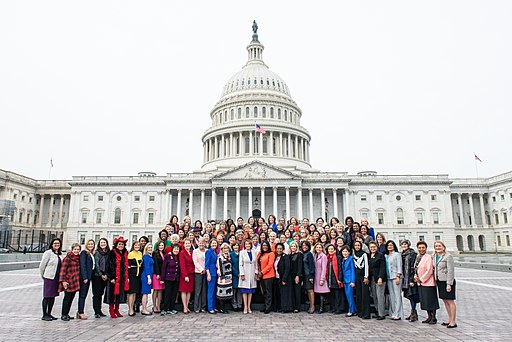8.6.06: Gendered Language in Media Coverage of Women in Politics
- Page ID
- 130363
\( \newcommand{\vecs}[1]{\overset { \scriptstyle \rightharpoonup} {\mathbf{#1}} } \) \( \newcommand{\vecd}[1]{\overset{-\!-\!\rightharpoonup}{\vphantom{a}\smash {#1}}} \)\(\newcommand{\id}{\mathrm{id}}\) \( \newcommand{\Span}{\mathrm{span}}\) \( \newcommand{\kernel}{\mathrm{null}\,}\) \( \newcommand{\range}{\mathrm{range}\,}\) \( \newcommand{\RealPart}{\mathrm{Re}}\) \( \newcommand{\ImaginaryPart}{\mathrm{Im}}\) \( \newcommand{\Argument}{\mathrm{Arg}}\) \( \newcommand{\norm}[1]{\| #1 \|}\) \( \newcommand{\inner}[2]{\langle #1, #2 \rangle}\) \( \newcommand{\Span}{\mathrm{span}}\) \(\newcommand{\id}{\mathrm{id}}\) \( \newcommand{\Span}{\mathrm{span}}\) \( \newcommand{\kernel}{\mathrm{null}\,}\) \( \newcommand{\range}{\mathrm{range}\,}\) \( \newcommand{\RealPart}{\mathrm{Re}}\) \( \newcommand{\ImaginaryPart}{\mathrm{Im}}\) \( \newcommand{\Argument}{\mathrm{Arg}}\) \( \newcommand{\norm}[1]{\| #1 \|}\) \( \newcommand{\inner}[2]{\langle #1, #2 \rangle}\) \( \newcommand{\Span}{\mathrm{span}}\)\(\newcommand{\AA}{\unicode[.8,0]{x212B}}\)
Activity 1: Examine the Use of Gendered Language in the Media
- Choose a particular woman in politics, a specific election, or a specific political job where women’s presence is still minimal/rare (e.g., Hillary Clinton and the 2008 or 2016 election; Elizabeth Warren, Kamala Harris, or Amy Klobuchar and the 2020 election; or the women of the Supreme Court - Sandra Day O'Connor, Ruth Bader Ginsburg, Sonya Sotomayor, Elena Kagan, Amy Coney-Barrett).
- Conduct a search for news media (e.g., online articles, videos) that reference the female politician you selected.
- Then, conduct counter research. Select a male politician.
- What similarities and differences did you notice between how women and men in politics are presented in the media? Why do you think this is so? How might this influence the general public's thoughts about these individuals?
- Present your analysis in a video, interactive timeline, or paper.
Bonus Media Literacy Activity 1: Examine the Use of Gendered Language on Television Shows and YouTube Channel Streams
- Record how many times the term "You guys" is said in a single episode of your favorite TV shows or YouTube channel streams.
- Write a PRAISE or PROTEST letter to the producer of the TV show or YouTube Channel Stream creator about the use gendered language or gender-inclusive language.
Bonus Media Literacy Activity 2: Examine Gender-Based Toy Marketing
Consumer advocates supported this first-in-the-nation law as a response to how traditional marketing to children has reinforced gender-stereotypes and reinforced some skill and mindset over others (boys' toys for example emphasize construction, movement, and building). Critics claim this law is a form of government interference on the rights of parents to raise children as they see fit.
- Visit large department stores in your community (like Target, Walmart and more) and record where toys and related children's items from clothing to toothbrushes are displayed. What marketing patterns do you find? Are toys and other items divided by gender? Is there a gender-neutral section for children's items?
- Write a letter of PRAISE or PROTEST to the store about its gender-based marketing of items for children.
- Write a letter of PRAISE or PROTEST urging other states to adopt similar legislation.


